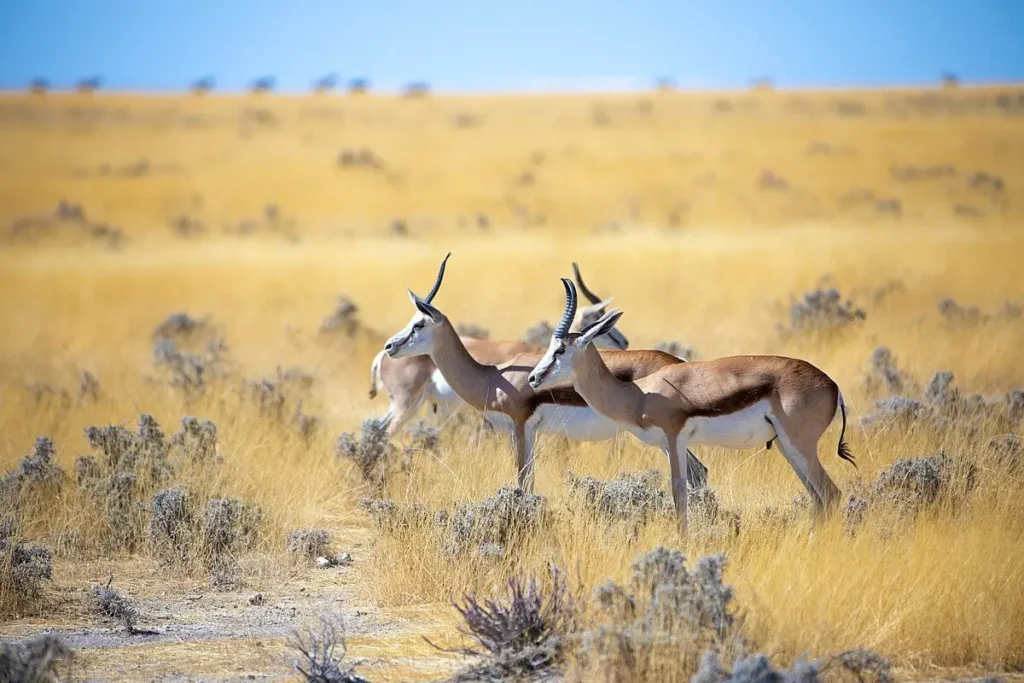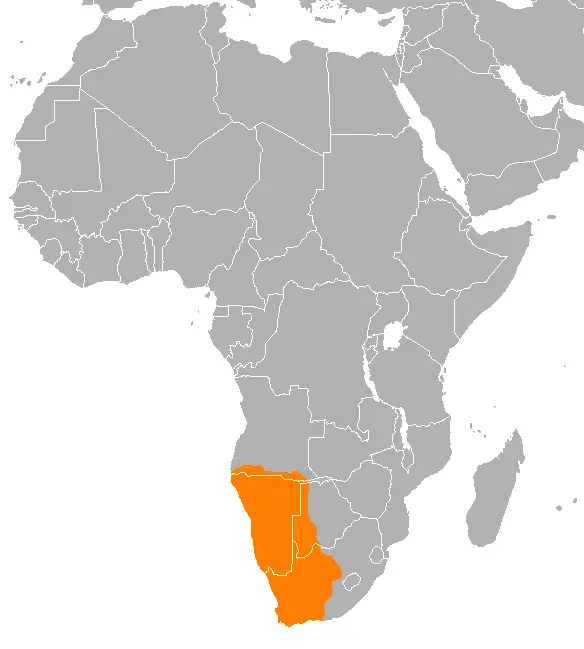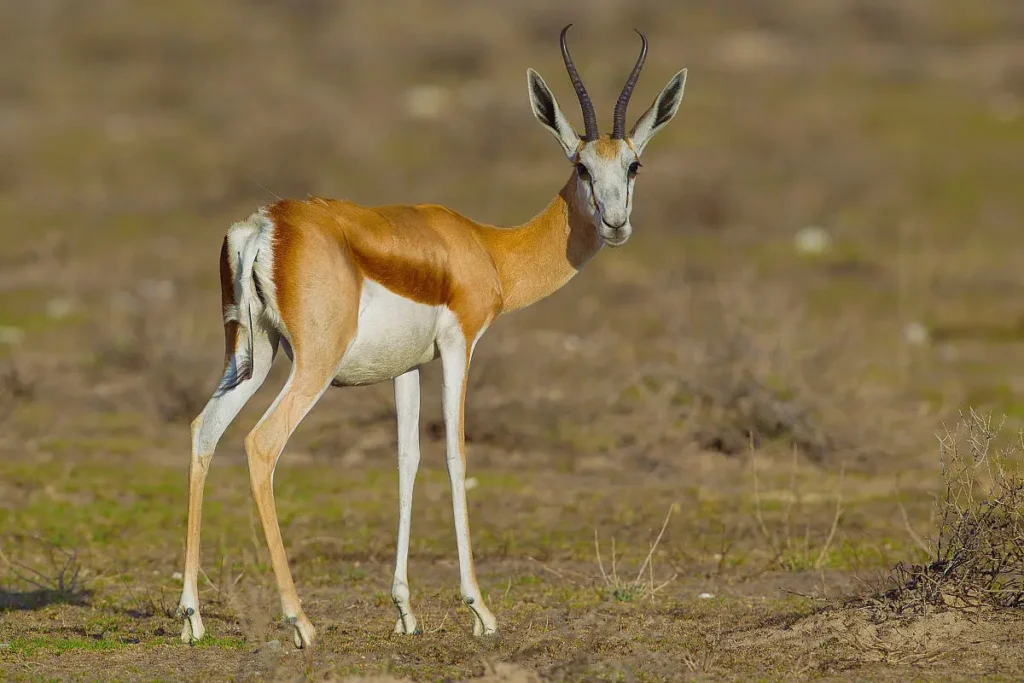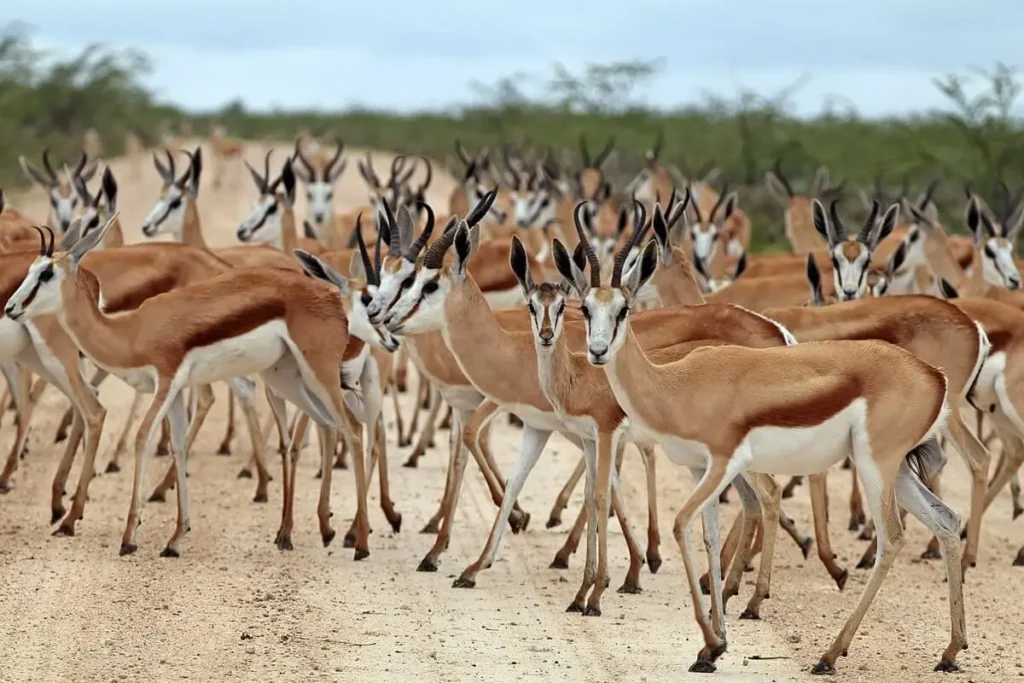Springbok (Antidorcas marsupialis) is an elegant antelope from South Africa, known for its extraordinary ability to jump and run fast. This hardy inhabitant of savannahs and deserts has become a national symbol of South Africa and the personification of wildlife freedom. Due to its beauty, grace and unique behavior, the springbok is one of the most recognizable African animals.

📚 Classification
• Kingdom: Animals (Animalia)
- Type: Chordate
- Class: Mammalia
- Order: Artiodactyla
- Family: Bovidae
- Genus: Antidorcas
- Species: Antidorcas marsupialis
👀 Appearance
- Height at the withers: 70-90 cm
- Weight: males - up to 50 kg, females - up to 37 kg
- Body length: up to 1.3 m
- Life expectancy: up to 10 years in the wild, up to 15 years in captivity
The Springbok has a slender body, graceful legs, and a long neck. It is characterized by white flanks, a dark horizontal stripe, and a white "mirror" on the back. Both sexes have lyre-shaped horns, although males have larger ones. The most famous feature is the ability to jump vertically (up to 3.5 m) from a standing position - "pronghorn".

🌍 Range and habitat
- Range: Southwest Africa - South Africa, Namibia, Botswana, Angola
- Not found in Ukraine, only in zoos
Springboks inhabit open spaces: dry savannas, steppes, semi-deserts, and even desert areas. They are nomadic in search of water and food, especially during droughts.
🐾 Behavior and social life
Springboks are both sedentary and nomadic. They can form large flocks during migrations or live in smaller groups:
- Males form harems - 1 male and several females
- Young males unite in "bachelor" groups
- Communication - through facial expressions, postures, jumps and chemical signals
Springbok jumping is an important part of social behavior. They can signal anxiety or demonstrate fitness and health.
🌿 Power supply
- Herbivores - consume grasses, leaves, shoots, sometimes succulent plants
- Due to the ability to absorb moisture from plants, they can survive without water for a long time
- They feed in the early morning and evening, avoiding the heat

🐣 Reproduction
- Sexual maturity: females - 1.5 years, males - 2 years
- Gong: mainly in the rainy season
- Pregnancy: lasts about 5.5 months
- Offspring: 1 baby, which the female hides in the grass for the first weeks of life
Newborn springboks are very vulnerable, but they join the herd as early as a month. Females can give birth once a year.
⚠️ Human interaction
- Previously, they were actively exterminated for their skin and meat
- Currently protected in national parks and reserves
- Popular in safari tourism and as a symbol of South African wildlife
- In the countries of their range, they are often depicted on coats of arms, coins, and in sports (for example, the South African national rugby team, the Springboks)

📉 Protected status
- IUCN: Least Concern
- Population: stable, hundreds of thousands of individuals
- Main threats: environmental degradation, competition with livestock
Due to its natural adaptations, springbok is one of the most successful inhabitants of arid zones.
💡 Interesting facts
✔️ The name "springbok" comes from Afrikaans and means "leaping antelope"
✔️ Their jumps can reach 3-4 meters in height - even without running!
✔️ When the "mirror" is raised, a strong musky odor is emitted on the back
✔️ In the nineteenth century, large springbok migrations numbered up to millions of individuals
✔️ Springboks can reach speeds of over 90 km/h, second only to cheetahs
✅ Conclusion
The springbok is the epitome of grace, strength, and endurance in African wildlife. Its ability to adapt to harsh conditions, incredible leaps and social behavior make it not only biologically interesting but also a culturally important species. Protecting the springbok is also about protecting the ecosystems in which it has dominated for centuries 🦌🌾.
